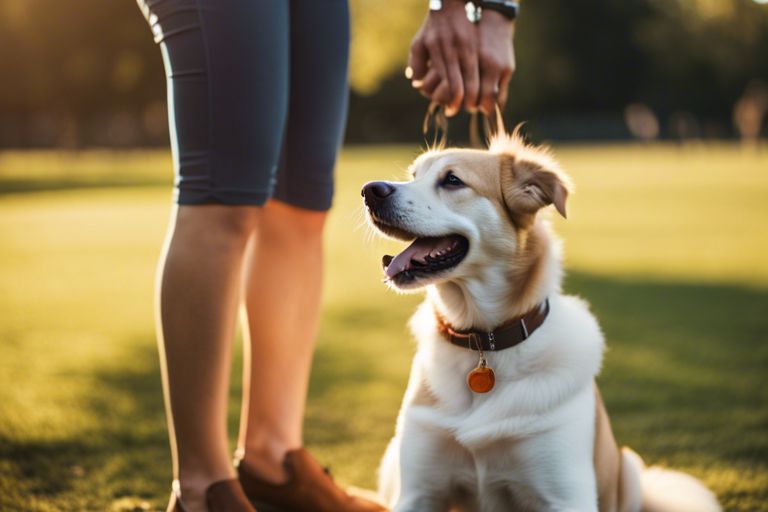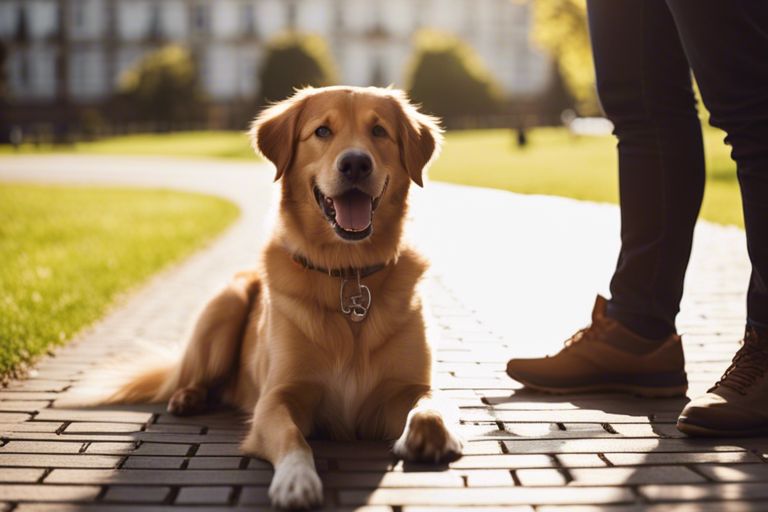Obedience is the cornerstone of a strong bond between you and your furry companion. In this list, we will explore 10 imperative steps to achieving obedience with your dog. By following these guidelines, you can foster a harmonious relationship built on trust, respect, and understanding. Let’s look into the fundamentals of dog training and strengthen the bond with your loyal four-legged friend.
Key Takeaways:
- Consistency is key: Dogs thrive on routine and consistency, so it’s important to provide clear rules and boundaries to establish a strong bond with your dog.
- Positive reinforcement: Use positive reinforcement techniques such as treats, praise, and playtime to encourage good behavior in your dog and strengthen your relationship.
- Patience and understanding: Building a strong bond with your dog takes time, patience, and understanding. Be patient with your dog as they learn, and always show them love and compassion.
Understanding Your Dog
Study body language
Even before you utter a command, your dog is communicating with you through body language. Understanding your dog’s body language will help you interpret their feelings, moods, and intentions. By observing their tail wagging, eye contact, ear position, and overall posture, you can better anticipate their responses and address any potential issues before they escalate.
Recognize breed traits
Even though each dog is unique, recognizing breed traits can give you insight into your dog’s natural tendencies and behaviors. Different breeds have been bred for specific purposes, such as herding, hunting, or guarding, which can influence their personalities and instincts. Being aware of these traits can help you tailor your training approach and activities to better suit your dog’s needs.
For instance, Border Collies are known for their high energy and intelligence, making them excel in tasks that require mental stimulation and physical activity. On the other hand, Bulldogs may have a more laid-back attitude and be less inclined towards vigorous exercise. Understanding these breed traits can guide you in providing appropriate outlets for your dog’s energy and ensuring a harmonious relationship.
Consistent Training Routine
Set daily schedules
Little do we realize the importance of setting daily schedules for our furry companions. Dogs thrive on routine, so establishing fixed times for feeding, playtime, walks, and training sessions can help create a sense of stability and predictability for your dog.
Repeat commands regularly
Consistency is key when it comes to training your dog. Repetition of commands is crucial in reinforcing desired behaviors and ensuring that your dog understands what is expected of them. By consistently using the same commands and gestures, you can help your dog learn and respond effectively.
Routine practice of commands on a daily basis is important to help your dog remember and obey them effectively. Incorporate short training sessions into your daily routine, ensuring that you are patient and consistent with your commands. Keep in mind, practice makes perfect, and with regular repetition, your dog will soon become accustomed to following your lead.
Positive Reinforcement
Once again, positive reinforcement is a powerful tool in building a strong bond with your dog. By rewarding good behavior and avoiding punishment, you can effectively train your dog to be obedient and well-behaved.
Reward Good Behavior
The key to positive reinforcement is to reward good behavior immediately. This can be done through treats, praise, or even playtime. The important thing is to make sure your dog knows exactly what behavior is being rewarded, so they can repeat it in the future.
Avoid Punishment
Forcing obedience through punishment can lead to fear, anxiety, and aggression in your dog. Instead of resorting to harsh methods, focus on using positive reinforcement to encourage the behavior you want to see. This will create a loving and trusting relationship between you and your furry companion.
You can set clear boundaries and redirect unwanted behavior without resorting to punishment. By using positive reinforcement techniques, you can teach your dog what is expected of them in a way that is both effective and humane.

Patience and Persistence
Manage expectations
If you’re initiateing on the journey of obedience training with your dog, it’s important to manage your expectations. Remember that every dog is unique and may progress at their own pace. Some dogs may pick up commands quickly, while others may take more time to grasp the concepts. It’s imperative to be patient and understanding throughout the training process.
Train incrementally
Persistence is key when it comes to training your dog. Start with basic commands such as sit, stay, and come, and gradually progress to more advanced tasks. Break down each command into small, manageable steps, and reward your dog for each successful attempt. Consistency is crucial in reinforcing the desired behavior and building a strong bond with your furry companion.
Expectations play a vital role in dog training. While it’s imperative to set realistic goals for your pet, it’s also important to remain flexible and adaptable. Celebrate small victories along the way and understand that setbacks are a natural part of the learning process. With patience, persistence, and a positive attitude, you and your dog can achieve great success in obedience training.
Clear Communication
Use simple commands
Now, when it comes to communicating effectively with your dog, simplicity is key. You’ll want to use short and clear commands that are easy for your furry friend to understand. Avoid using complex phrases or sentences that may confuse your dog.
Maintain tone consistency
Clearly, one of the most important aspects of clear communication with your dog is maintaining a consistent tone. Your tone of voice plays a significant role in conveying your message to your dog. Be sure to use the same tone whether you are giving a command, praising, or correcting your dog.
Tone consistency helps your dog associate specific tones with particular actions, making it easier for them to understand what you are asking of them. Use a firm and authoritative tone for commands, a gentle and soothing tone for praise, and a stern tone for corrections.
Socialization
Introduce new people
People play a vital role in shaping your dog’s social skills. It’s important to introduce your dog to a variety of individuals, including children, adults, the elderly, and people of different ethnicities. This exposure helps your dog become comfortable and confident in various social settings. Ensure that these interactions are positive and supervised to prevent any negative experiences that could impact your dog’s social development.
Explore new environments
Little by little, introduce your dog to new environments to broaden their experiences. Start with quiet places and gradually work up to busier areas to prevent overwhelming your dog. Exposure to different locations can help your dog adapt to various stimuli such as different sounds, sights, and smells. This exposure aids in your dog’s overall socialization and helps them become more adaptable and well-rounded.
Socialization is a crucial aspect of your dog’s development that should be prioritized from a young age. By introducing your dog to a variety of people and places, you are setting them up for success in navigating the world around them.
Establish Leadership
Lead confidently
For you to build a strong bond with your dog, it is necessary to establish yourself as the leader of the pack. Dogs are pack animals by nature, and they look to their owners for guidance and direction. Little gestures, such as walking through doorways before your dog or eating before your dog, can help convey to your pet that you are the one in charge.
Set boundaries
Some dog owners may feel guilty about setting boundaries for their pets, but it is necessary for a harmonious relationship. Dogs thrive on structure and knowing their place in the pack hierarchy. By setting clear boundaries and consistently enforcing them, you are providing your dog with a sense of security and leadership, which will ultimately strengthen your bond.
Health and Wellness
Regular Vet Visits
Health should be a top priority when it comes to caring for your dog. Regular vet visits are important to ensure your furry companion’s well-being. These check-ups help catch any potential health issues early on, allowing for prompt treatment and a longer, healthier life for your dog.
Provide Balanced Diet
An important aspect of maintaining your dog’s health is providing a balanced diet. This means offering a combination of high-quality dog food, fresh water, and occasional treats. A balanced diet helps keep your dog at a healthy weight, provides important nutrients, and contributes to overall well-being.
You can consult with your vet to determine the best diet for your dog based on their age, size, and activity level. Remember that a proper diet plays a crucial role in your dog’s health and can prevent various health issues down the line.
Play and Exercise
Engage in activities
Keep your dog physically and mentally stimulated by engaging in activities that cater to their natural instincts. Whether it’s a game of fetch, a long walk in the park, or a challenging puzzle toy, find activities that your dog enjoys and make them a regular part of your routine.
Allocate playtime
Allocate dedicated playtime for your dog each day to strengthen your bond and keep them happy and healthy. This time is crucial for socialization, physical exercise, and mental stimulation. It also provides an opportunity for you to reinforce obedience training and practice commands in a fun and engaging way.
Any interaction with your dog is an opportunity to build a stronger bond and establish yourself as the leader. Use playtime to not only have fun but also to teach important skills, reinforce good behavior, and strengthen your relationship with your furry companion.
Quality Time Together
Fortify Emotional Bond
Your bond with your dog is imperative to a successful obedience training. While spending quality time together, engage in activities that strengthen your emotional connection. This can include daily walks, interactive play sessions, or even just lounging together on the couch. These moments of bonding will create a sense of trust and loyalty between you and your furry companion.
Build Mutual Trust
To build mutual trust, it is crucial to establish clear communication with your dog. Trust is a two-way street, and it is important to show your dog that you have their best interests at heart. Setting boundaries and consistently rewarding good behavior will help your dog understand what is expected of them. Additionally, always remain patient and have realistic expectations as trust takes time to develop.
To wrap up
With these considerations in mind, building a strong bond with your dog through obedience training is crucial for a harmonious relationship. By following these 10 steps and dedicating time and effort to your dog’s training, you will not only establish clear communication but also strengthen the trust between you and your canine companion. Recall, consistency, patience, and positive reinforcement are key in creating a well-behaved and happy dog that will bring joy to your life for years to come.
FAQ
Q: Why is building a strong bond with your dog important?
A: Building a strong bond with your dog is crucial for establishing trust, respect, and communication. It creates a foundation for obedience training and enhances the overall relationship between you and your furry companion.
Q: How can I strengthen my bond with my dog?
A: To strengthen your bond with your dog, spend quality time together engaging in activities such as daily walks, interactive play sessions, training exercises, and positive reinforcement. Consistency, patience, and understanding are key in building a strong connection.
Q: What are the 10 steps to obedience for building a strong bond with your dog?
A: The 10 steps to obedience for building a strong bond with your dog include setting clear rules and boundaries, establishing a routine, providing mental stimulation, using positive reinforcement, practicing obedience training daily, being a strong leader, showing affection, being patient, remaining consistent, and seeking professional help if needed. By following these steps, you can forge a deep and lasting bond with your canine companion.

